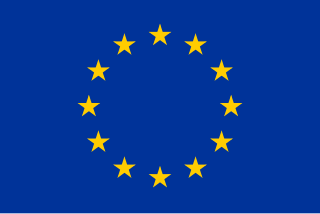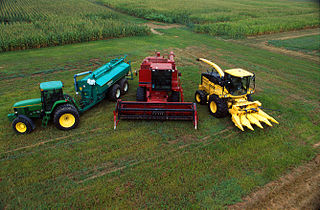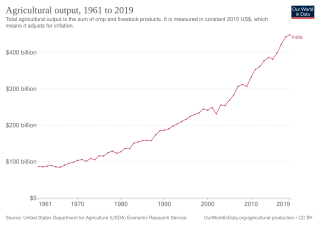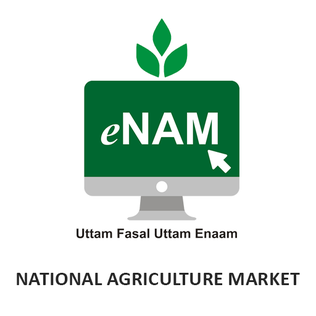
A commodity market is a market that trades in the primary economic sector rather than manufactured products, such as cocoa, fruit and sugar. Hard commodities are mined, such as gold and oil. Futures contracts are the oldest way of investing in commodities. Commodity markets can include physical trading and derivatives trading using spot prices, forwards, futures, and options on futures. Farmers have used a simple form of derivative trading in the commodity market for centuries for price risk management.

In finance, speculation is the purchase of an asset with the hope that it will become more valuable shortly. It can also refer to short sales in which the speculator hopes for a decline in value.

The Common Agricultural Policy (CAP) is the agricultural policy of the European Union. It implements a system of agricultural subsidies and other programmes. It was introduced in 1962 and has since then undergone several changes to reduce the EEC budget cost and consider rural development in its aims. It has however, been criticised on the grounds of its cost, its environmental, and humanitarian effects.

An agricultural subsidy is a government incentive paid to agribusinesses, agricultural organizations and farms to supplement their income, manage the supply of agricultural commodities, and influence the cost and supply of such commodities.
A futures exchange or futures market is a central financial exchange where people can trade standardized futures contracts defined by the exchange. Futures contracts are derivatives contracts to buy or sell specific quantities of a commodity or financial instrument at a specified price with delivery set at a specified time in the future. Futures exchanges provide physical or electronic trading venues, details of standardized contracts, market and price data, clearing houses, exchange self-regulations, margin mechanisms, settlement procedures, delivery times, delivery procedures and other services to foster trading in futures contracts. Futures exchanges can be organized as non-profit member-owned organizations or as for-profit organizations. Futures exchanges can be integrated under the same brand name or organization with other types of exchanges, such as stock markets, options markets, and bond markets. Non-profit member-owned futures exchanges benefit their members, who earn commissions and revenue acting as brokers or market makers. For-profit futures exchanges earn most of their revenue from trading and clearing fees.
A hedge is an investment position intended to offset potential losses or gains that may be incurred by a companion investment. A hedge can be constructed from many types of financial instruments, including stocks, exchange-traded funds, insurance, forward contracts, swaps, options, gambles, many types of over-the-counter and derivative products, and futures contracts.

The National Agricultural Statistics Service (NASS) is the statistical branch of the U.S. Department of Agriculture and a principal agency of the U.S. Federal Statistical System. NASS has 12 regional offices throughout the United States and Puerto Rico and a headquarters unit in Washington, D.C. NASS conducts hundreds of surveys and issues nearly 500 national reports each year on issues including agricultural production, economics, demographics and the environment. NASS also conducts the United States Census of Agriculture every five years.
An Agricultural Produce Market Committee (APMC) is a marketing board established by state governments in India to ensure farmers are safeguarded from exploitation by large retailers, as well as ensuring the farm to retail price spread does not reach excessively high levels. APMCs are regulated by states through their adoption of a Agriculture Produce Marketing Regulation (APMR) Act.

The history of agriculture in India dates back to the Neolithic period. India ranks second worldwide in farm outputs. As per the Indian economic survey 2020 -21, agriculture employed more than 50% of the Indian workforce and contributed 20.2% to the country's GDP.
e-Choupal is an initiative of ITC Limited, a unique web-based page, to link directly with rural farmers via the Internet for procurement of agricultural and aquaculture products like soybeans, wheat, coffee, and prawns. e-Choupal tackles the challenges posed by Indian agriculture, characterized by fragmented farms, weak infrastructure and the involvement of intermediaries. The programme installs computers with Internet access in rural areas of India to offer farmers up-to-date marketing and agricultural information.

Agricultural marketing covers the services involved in moving an agricultural product from the farm to the consumer. These services involve the planning, organizing, directing and handling of agricultural produce in such a way as to satisfy farmers, intermediaries and consumers. Numerous interconnected activities are involved in doing this, such as planning production, growing and harvesting, grading, packing and packaging, transport, storage, agro- and food processing, provision of market information, distribution, advertising and sale. Effectively, the term encompasses the entire range of supply chain operations for agricultural products, whether conducted through ad hoc sales or through a more integrated chain, such as one involving contract farming.
Market information systems are information systems used in gathering, analyzing and disseminating information about prices and other information relevant to farmers, animal rearers, traders, processors and others involved in handling agricultural products. Market information systems play an important role in agro-industrialisation and food supply chains. With the advance of information and communication technologies for development (ICTs) in developing countries, the income- generation opportunities offered by market information systems have been sought by international development organizations, non-governmental organizations (NGOs) and businesses alike.

MetaTrader 4, also known as MT4, is an electronic trading platform widely used by online retail foreign exchange speculative traders. It was developed by MetaQuotes Software and released in 2005. The software is licensed to foreign exchange brokers who provide the software to their clients. The software consists of both a client and server component. The server component is run by the broker and the client software is provided to the broker's customers, who use it to see live streaming prices and charts, to place orders, and to manage their accounts.

The Essential Commodities Act (ECA) is an act of the Parliament of India that was established to ensure the delivery of certain commodities or products, the supply of which, if obstructed due to hoarding or black marketing, would affect the normal life of the people. This includes foodstuff, drugs, fuel etc. This act was modified by the Essential Commodities (Amendment) Act, 2020 as part of the 2020 Indian farm reforms.
StarAgri is an India based agricultural marketing company providing warehousing, procurement and Collateral Management of Agri-Commodities. StarAgri was established in April 2006 by former ICICI Bank associates and has a presence at 190 locations across 16 Indian states. It has 800 agri commodity warehouses under its control, with a cumulative capacity of around 1.2 million metric tons. The number of employees at the company is over 500.StarAgri has five post-harvesting focus areas: agri-warehousing, procurement, collateral management, lab testing and logistics. A bulk of its revenues (65%) are derived from warehousing services.
Agriculture Department or Agri Punjab is department of Government of Punjab, Pakistan. The department is responsible for legislation, policy formulation, and development of agriculture sector in Punjab. Food and irrigation are separate departments.

Ashok Gulati is an Indian agricultural economist and a former chairman of the Commission for Agricultural Costs and Prices (CACP), the advisory body of the Government of India on food supplies and pricing policies. Gulati was instrumental in the hiking the minimum support price of several food grains. Currently he is Infosys chair professor for Agriculture at Indian Council for Research on International Economic Relations (ICRIER). He is also a member of the Task Force on Agriculture set by the prime minister under NITI Aayog and chairman of the Expert Group on Agriculture Market Reforms (2015). He was an active member of the high-level committee set up by the NDA Government to restructure and reorient Food Corporation of India in order to improve its operational and financial efficiency.

National Agriculture Market or eNAM is an online trading platform for agricultural commodities in India. The market facilitates farmers, traders and buyers with online trading in commodities.
Nizamabad Agriculture Market also NAMC is an agriculture market located in Nizamabad, Telangana, India.[1] It is second-biggest grain market in Telangana. It is spread over 67 acres. The market won the award for the best eNAM market in India in 2016.
The Farmers' Produce Trade and Commerce Act, 2020 was an act of the Indian Government that permits intrastate and inter-state trade of farmers’ produce beyond the physical premises of Agricultural Produce Market Committee (APMC) market yards (mandis) and other markets notified under state APMC Acts.










